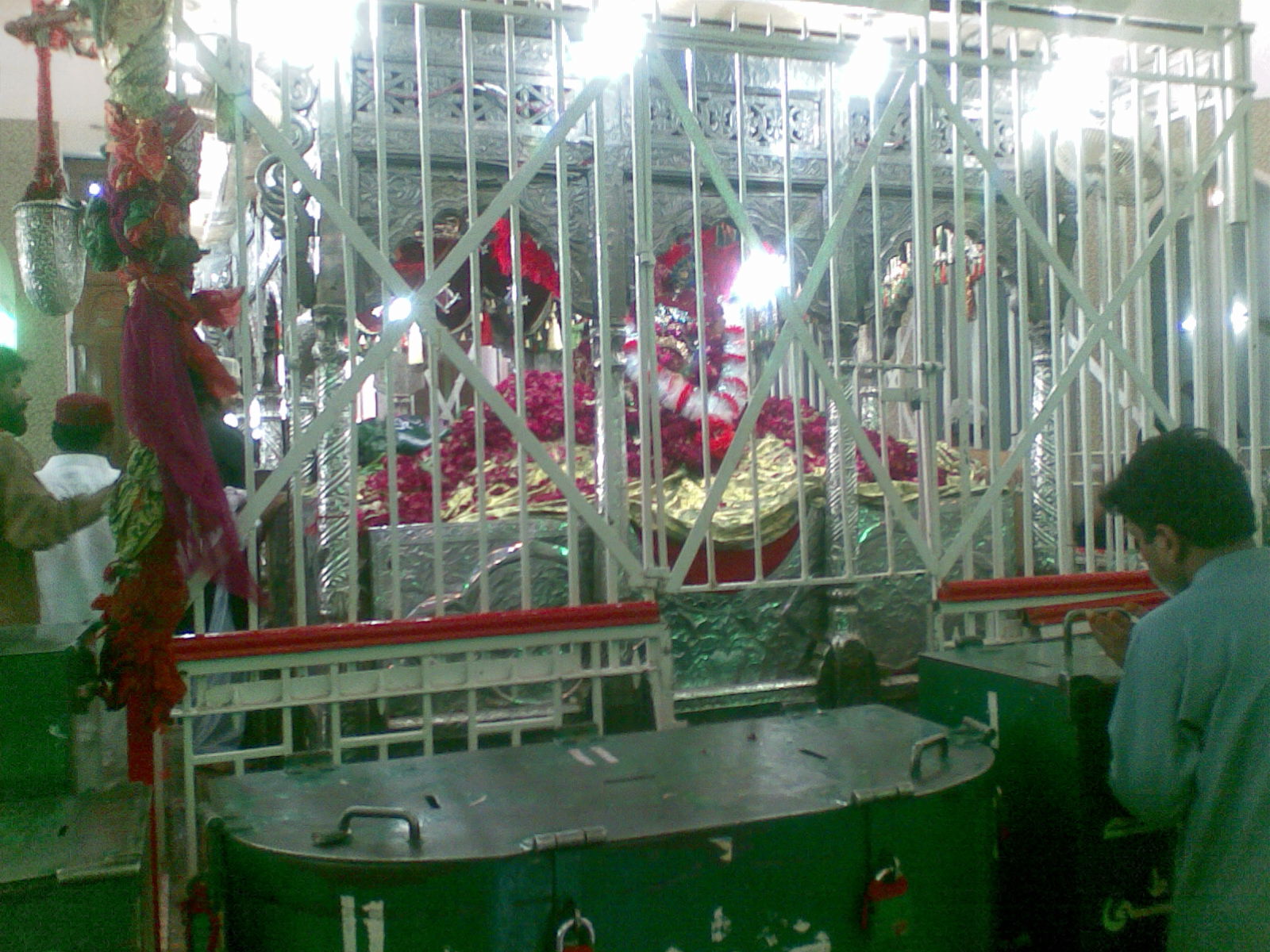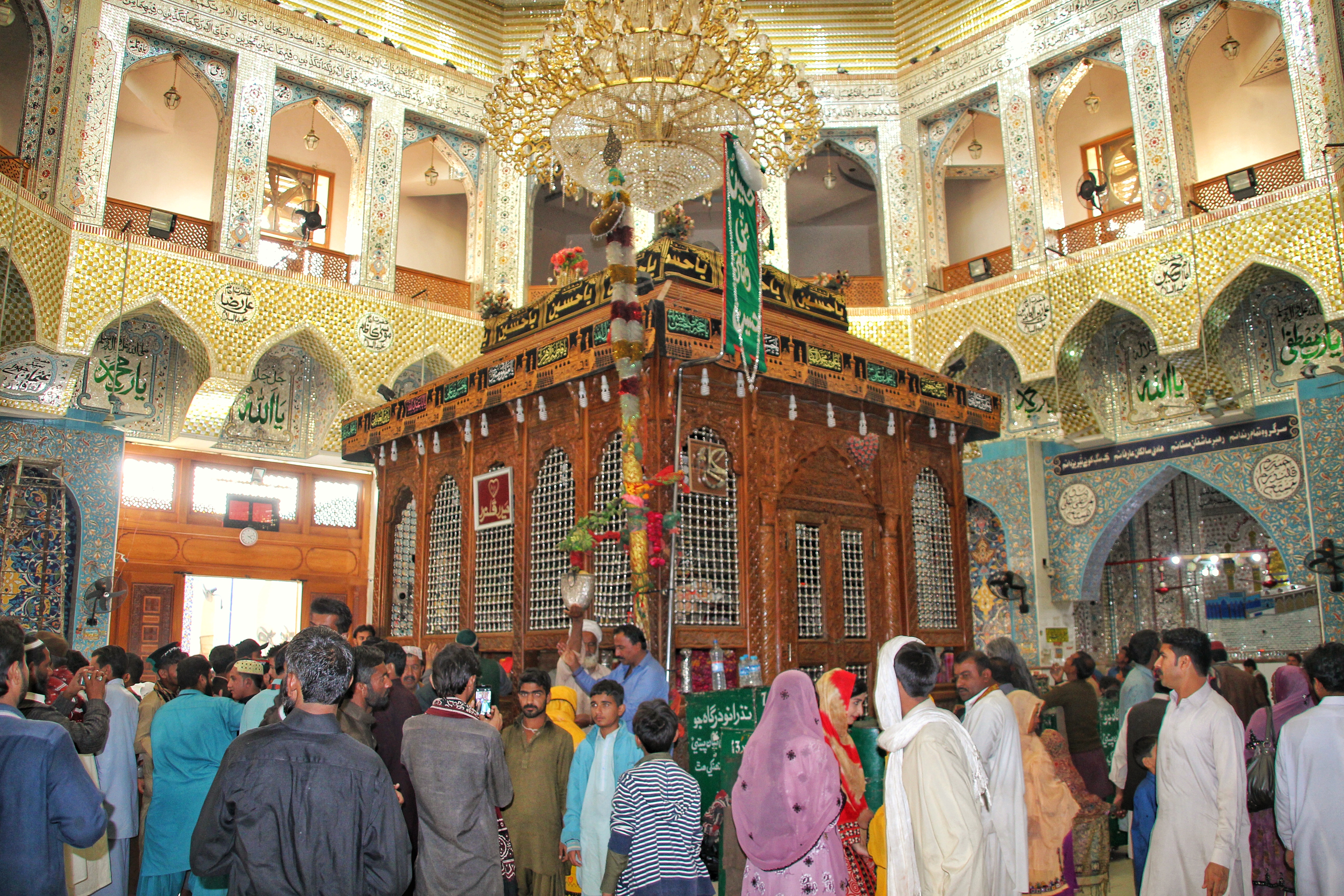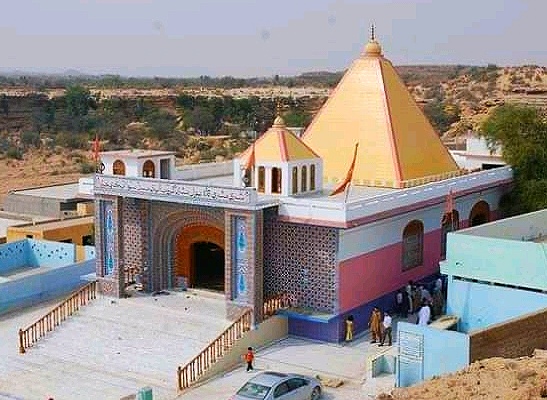|
Sehwan
Sehwan ( sd, سيوهڻ شريف, ur, ; also commonly referred to as Sehwan Sharif or ''Noble Sehwan'') is a historic city located in Jamshoro District of Sindh province in Pakistan and on the west bank of the Indus north-west of Hyderabad. The city is renowned for being home of one of Pakistan's most important Sufi shrines, the Shrine of Lal Shahbaz Qalandar.The city also holds the status of taluka under Jamshoro District. It was previously under Dadu District however, after establishing the Jamshoro District, Sehwan was linked with Jamshoro District. Owing to the popularity of its Sufi shrine, the terms "Sehwan" and "Qalandar" are often used interchangeably in Pakistan. Sehwan is one of Pakistan's most important spiritual centres, along with other shrines such as the Shrine of Abdullah Shah Ghazi in Karachi, Data Durbar Complex in Lahore, Bari Imam in Noorpur Shehan near Islamabad, and the lustrous tombs of the Suhrawardi Sufis in Multan. History Sehwan is probably the mo ... [...More Info...] [...Related Items...] OR: [Wikipedia] [Google] [Baidu] |
Shrine Of Lal Shahbaz Qalandar
The Shrine of Lal Shabaz Qalandar ( ur, ; sd, لال شهباز قلندر جي مزار) is a shrine and mausoleum dedicated to the 13th century Muslim and Sufi saint, Lal Shahbaz Qalandar. The shrine is located in Sehwan Sharif, in the Pakistani province of Sindh. The shrine is one of the most important in Pakistan, and attracts up to one million visitors annually. History The shrine's construction was started under the reign of Shah Tughluq, who ordered that the saint's remains be enshrined in Sehwan Sharif. The tomb complex was built in 1356 C.E., though it has been expanded several times since its founding. Ibn Battuta mentions the shrine during his travels to the region in the mid-fourteenth century. In 1639, the shrine was greatly expanded under the rule of Mirza Jani of the Tarkhan dynasty. Though the shrine was founded centuries ago, its popularity expanded in the late 20th century. On 16 February 2017, the Islamic State of Iraq and the Levant – Khorasan Province ... [...More Info...] [...Related Items...] OR: [Wikipedia] [Google] [Baidu] |
Jamshoro District
Jamshoro District ( sd, ضلعو ڄام شورو, ur, ), is a district of Sindh province, Pakistan. Jamshoro city is the capital while Kotri is the largest city of the Jamshoro District. The district borders Dadu district to the north. To the east, the Indus separates it from Nawab Shah, Matyari and Hyderabad districts. Thatta district lies to the south, and Karachi district to the south west. To the west, the Kheerthar Range separates it from the Sindh and Lasbela district of Baluchistan. Jamshoro District was split from Dadu District in 14th December 2004 It is situated on the west bank of River Indus. Geography The total geographical area of the district is 11,260 square kilometres. It is about 220 kilometers from north to south and about 100 kilometres wide from east to west. A 2 to 6 kilometres wide belt of the west bank of River Indus is cultivated and irrigated and the remaining land of the district is either hilly or cultivated. Agriculture is the main source of i ... [...More Info...] [...Related Items...] OR: [Wikipedia] [Google] [Baidu] |
Sufi
Sufism ( ar, ''aṣ-ṣūfiyya''), also known as Tasawwuf ( ''at-taṣawwuf''), is a mystic body of religious practice, found mainly within Sunni Islam but also within Shia Islam, which is characterized by a focus on Islamic spirituality, ritualism, Asceticism#Islam, asceticism and esotericism. It has been variously defined as "Islamic mysticism",Martin Lings, ''What is Sufism?'' (Lahore: Suhail Academy, 2005; first imp. 1983, second imp. 1999), p.15 "the mystical expression of Islamic faith", "the inward dimension of Islam", "the phenomenon of mysticism within Islam", the "main manifestation and the most important and central crystallization" of mystical practice in Islam, and "the interiorization and intensification of Islamic faith and practice". Practitioners of Sufism are referred to as "Sufis" (from , ), and historically typically belonged to "orders" known as (pl. ) – congregations formed around a grand who would be the last in a Silsilah, chain of successive teac ... [...More Info...] [...Related Items...] OR: [Wikipedia] [Google] [Baidu] |
Sindh
Sindh (; ; ur, , ; historically romanized as Sind) is one of the four provinces of Pakistan. Located in the southeastern region of the country, Sindh is the third-largest province of Pakistan by land area and the second-largest province by population after Punjab. It shares land borders with the Pakistani provinces of Balochistan to the west and north-west and Punjab to the north. It shares International border with the Indian states of Gujarat and Rajasthan to the east; it is also bounded by the Arabian Sea to the south. Sindh's landscape consists mostly of alluvial plains flanking the Indus River, the Thar Desert in the eastern portion of the province along the international border with India, and the Kirthar Mountains in the western portion of the province. The economy of Sindh is the second-largest in Pakistan after the province of Punjab; its provincial capital of Karachi is the most populous city in the country as well as its main financial hub. Sindh is home ... [...More Info...] [...Related Items...] OR: [Wikipedia] [Google] [Baidu] |
Abdullah Shah Ghazi
:''See also Ghazi and Gazi (other)'' Abdullah Shah Ghazi ( ar, عبد الله شاه غازي, ʿAbd Allāh Shāh Ghāzī) (c. 720 - c. 768) was a Muslim Sufism, mystic and Sufism, Sufi whose shrine is located in Clifton, Karachi, Clifton in Karachi, in Sindh province of Pakistan. His real name was Abdullah al-Ashtar. His father, Muhammad al-Nafs al-Zakiyya, was a descendant of Muhammad through his daughter Fatimah. Life in Sindh Around 761, Muhammad al-Nafs al-Zakiyya, Muhammad Nafs al-Zakiyah sailed from Aden to Sind where he consulted with the governor, Umar ibn Hafs Hazarmard before returning to Kufah and Medina. His son, Abdullah al-Ashtar, also known as Abdullah Shah Ghazi, married a woman from Sindh and had children by her. According to Tabari, Sindh was selected since its governor, Umar ibn Hafs, supported Muhammad's claim to the Imamate. Ibn Khaldun and Ibn al-Athir say that the governor had Shi'ite inclinations. Once they decided enough support had been ... [...More Info...] [...Related Items...] OR: [Wikipedia] [Google] [Baidu] |
Dargah
A dargah ( fa, درگاه ''dargâh'' or ''dargah'', Turkish: ''dergâh'', Hindustani: ''dargah'' दरगाह درگاہ, bn, দরগাহ ''dorgah'') is a shrine or tomb built over the grave of a revered religious figure, often a Sufi saint or dervish. Sufis often visit the shrine for ziyarat, a term associated with religious visits and "pilgrimages". Dargahs are often associated with Sufi eating and meeting rooms and hostels, called ''khanqah'' or hospices. They usually include a mosque, meeting rooms, Islamic religious schools (madrassas), residences for a teacher or caretaker, hospitals, and other buildings for community purposes. The same structure, carrying the same social meanings and sites of the same kinds of ritual practices, is called '' maqam'' in the Arabic-speaking world. Dargah today is considered to be place where saints prayed and mediated (their spiritual residence). Shrine is modern day building which encompasses of actual dargah as well but ... [...More Info...] [...Related Items...] OR: [Wikipedia] [Google] [Baidu] |
Muhammad Bin Qasim
Muḥammad ibn al-Qāsim al-Thaqāfī ( ar, محمد بن القاسم الثقفي; –) was an Arab military commander in service of the Umayyad Caliphate who led the Muslim conquest of Sindh (part of modern Pakistan), inaugurating the Umayyad campaigns in India. His military exploits led to the establishment of the Islamic province of Sindh, and the takeover of the region from the Sindhi Brahman dynasty and its ruler, Raja Dahir, who was subsequently decapitated with his head sent to al-Hajjaj ibn Yusuf in Basra. With the capture of the then-capital of Aror by Arab forces, Muhammad ibn al-Qasim became the first Muslim to have successfully captured land, which marked the beginning of Muslim rule in India. Muhammad ibn al-Qasim belonged to the Banu Thaqif, an Arab tribe that is concentrated around the city of Taif in western Arabia. After the Muslim conquest of Persia, he was assigned as the governor of Fars, likely succeeding his uncle Muhammad ibn Yusuf al-Thaqafi. F ... [...More Info...] [...Related Items...] OR: [Wikipedia] [Google] [Baidu] |
Dadu District
Dadu District ( sd, ضلعو دادو), ( ur, ) is a district of Sindh Province, Pakistan. With headquarters the city of Dadu, the district was created in 1931 by merging Kotri and Mahal Kohistan (later Jamshoro) tehsils from Karachi District and Mehar, Khairpur Nathan Shah, Dadu, Johi and Sehwan tehsils from Larkana District. In 2004, several talukas in the south were split off to create the new Jamshoro District. Its boundary touches with four districts of Sindh i.e. Jamshoro, Naushahro Feroze, Shaheed Benazirabad and Kamber Shahdadkot. Demographics At the time of the 2017 census, Dadu district had a population of 1,550,390, of which 795,700 were males and 754,480 were females. The rural population was 1,166,984 (75.27%) and urban 383,406 (24.72%). The literacy rate is 47.26%: 57.92% for males and 36.02% for females. The majority religion is Islam, with 99.37% of the population. Hinduism (including those from Scheduled Castes) is practiced by 0.58% of the population. Sind ... [...More Info...] [...Related Items...] OR: [Wikipedia] [Google] [Baidu] |
Adam
Adam; el, Ἀδάμ, Adám; la, Adam is the name given in Genesis 1-5 to the first human. Beyond its use as the name of the first man, ''adam'' is also used in the Bible as a pronoun, individually as "a human" and in a collective sense as "mankind". tells of God's creation of the world and its creatures, including ''adam'', meaning humankind; in God forms "Adam", this time meaning a single male human, out of "the dust of the ground", places him in the Garden of Eden, and forms a woman, Eve, as his helpmate; in Adam and Eve eat the fruit of the tree of knowledge and God condemns Adam to labour on the earth for his food and to return to it on his death; deals with the birth of Adam's sons, and lists his descendants from Seth to Noah. The Genesis creation myth was adopted by both Christianity and Islam, and the name of Adam accordingly appears in the Christian scriptures and in the Quran. He also features in subsequent folkloric and mystical elaborations in later Judai ... [...More Info...] [...Related Items...] OR: [Wikipedia] [Google] [Baidu] |
Seth
Seth,; el, Σήθ ''Sḗth''; ; "placed", "appointed") in Judaism, Christianity, Islam, Mandaeism, and Sethianism, was the third son of Adam and Eve and brother of Cain and Abel, their only other child mentioned by name in the Hebrew Bible. According to , Seth was born after Abel's murder by Cain, and Eve believed that God had appointed him as a replacement for Abel. Genesis According to the Book of Genesis, Seth was born when Adam was 130 years old (according to the Masoretic Text), or 230 years old (according to the Septuagint), "a son in his likeness and image". The genealogy is repeated at . states that Adam fathered "sons and daughters" before his death, aged 930 years. According to Genesis, Seth died at the age of 912 (that is, 14 years before Noah's birth). (2962 BC) Jewish tradition Seth figures in the pseudepigraphical texts of the '' Life of Adam and Eve'' (the ''Apocalypse of Moses''). It recounts the lives of Adam and Eve from after their expulsion from the G ... [...More Info...] [...Related Items...] OR: [Wikipedia] [Google] [Baidu] |
Town
A town is a human settlement. Towns are generally larger than villages and smaller than cities, though the criteria to distinguish between them vary considerably in different parts of the world. Origin and use The word "town" shares an origin with the German word , the Dutch word , and the Old Norse . The original Proto-Germanic word, *''tūnan'', is thought to be an early borrowing from Proto-Celtic *''dūnom'' (cf. Old Irish , Welsh ). The original sense of the word in both Germanic and Celtic was that of a fortress or an enclosure. Cognates of ''town'' in many modern Germanic languages designate a fence or a hedge. In English and Dutch, the meaning of the word took on the sense of the space which these fences enclosed, and through which a track must run. In England, a town was a small community that could not afford or was not allowed to build walls or other larger fortifications, and built a palisade or stockade instead. In the Netherlands, this space was a garden, ... [...More Info...] [...Related Items...] OR: [Wikipedia] [Google] [Baidu] |
Ham (son Of Noah)
Ham (in ), according to the Table of Nations in the Book of Genesis, was the second son of Noah and the father of Cush, Mizraim, Phut and Canaan. Ham's descendants are interpreted by Flavius Josephus and others as having populated Africa and adjoining parts of Asia. The Bible refers to Egypt as "the land of Ham" in Psalm 78:51; 105:23, 27; 106:22; 1 Chronicles 4:40. Etymology Since the 17th century, a number of suggestions have been made that relate the name ''Ham'' to a Hebrew word for "burnt", "black" or "hot", to the Egyptian word '' ḥm'' for "servant" or the word '' ḥm'' for "majesty" or the Egyptian word '' kmt'' for "Egypt". A 2004 review of David Goldenberg's ''The Curse of Ham: Race and Slavery in Early Judaism, Christianity and Islam'' (2003) states that Goldenberg "argues persuasively that the biblical name Ham bears no relationship at all to the notion of blackness and as of now is of unknown etymology." In the Bible indicates that Noah became the father of ... [...More Info...] [...Related Items...] OR: [Wikipedia] [Google] [Baidu] |









.jpg)
